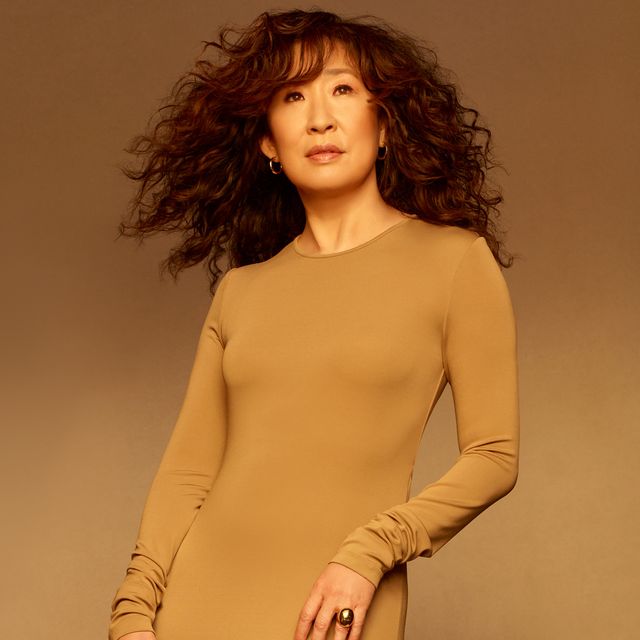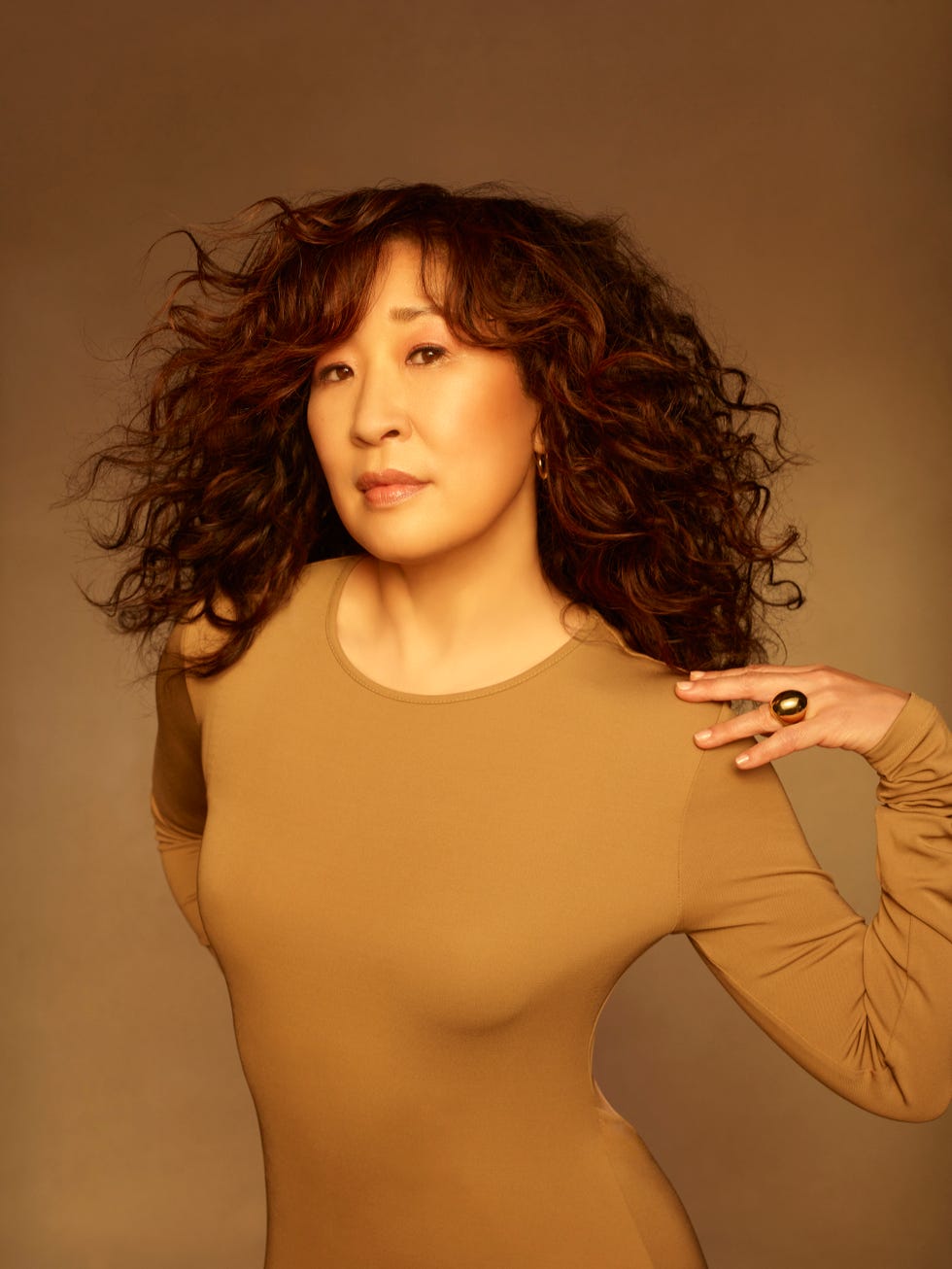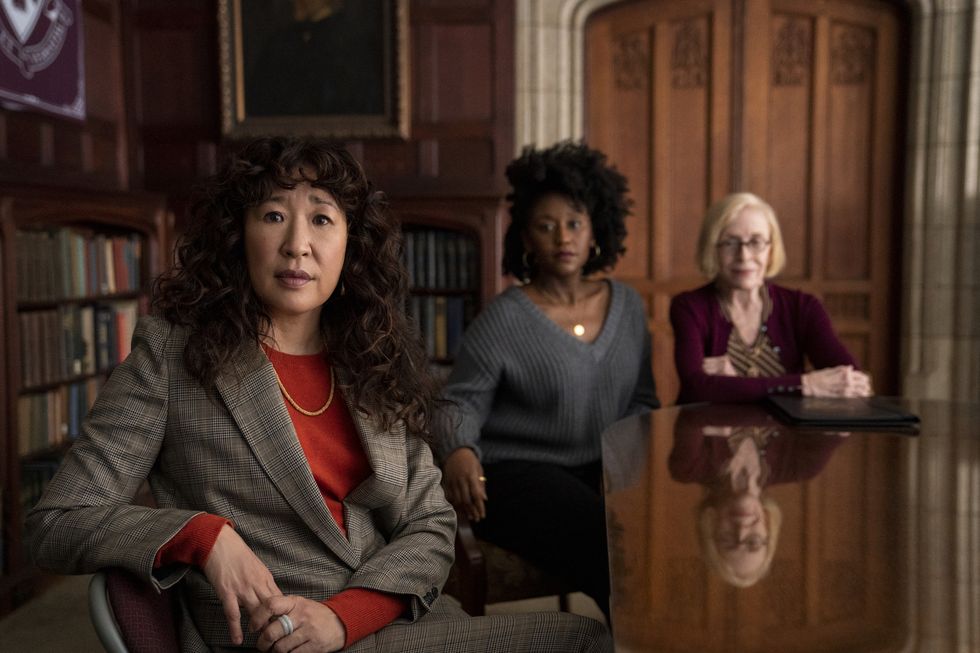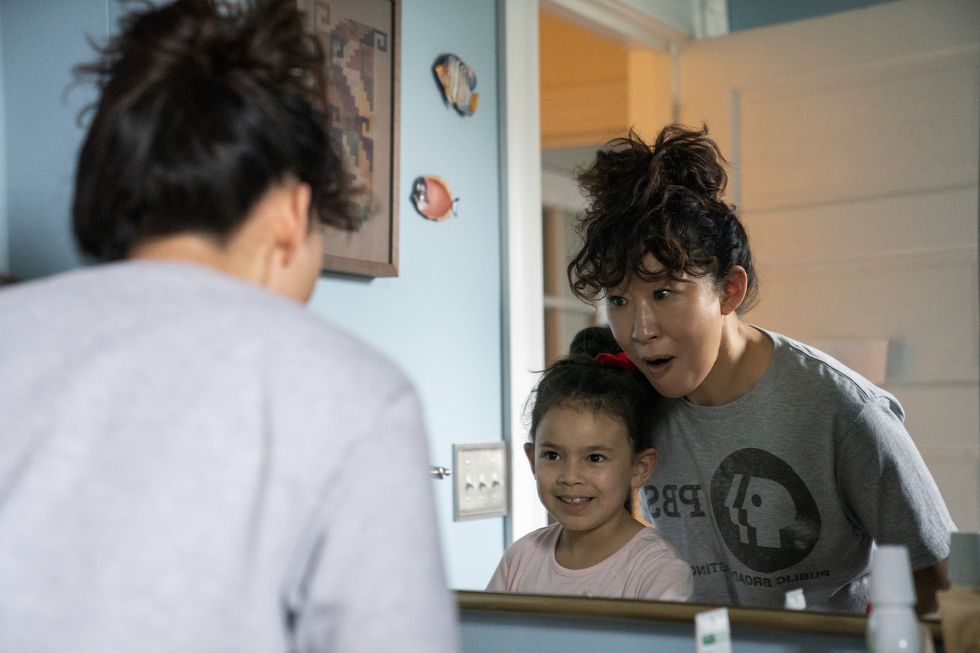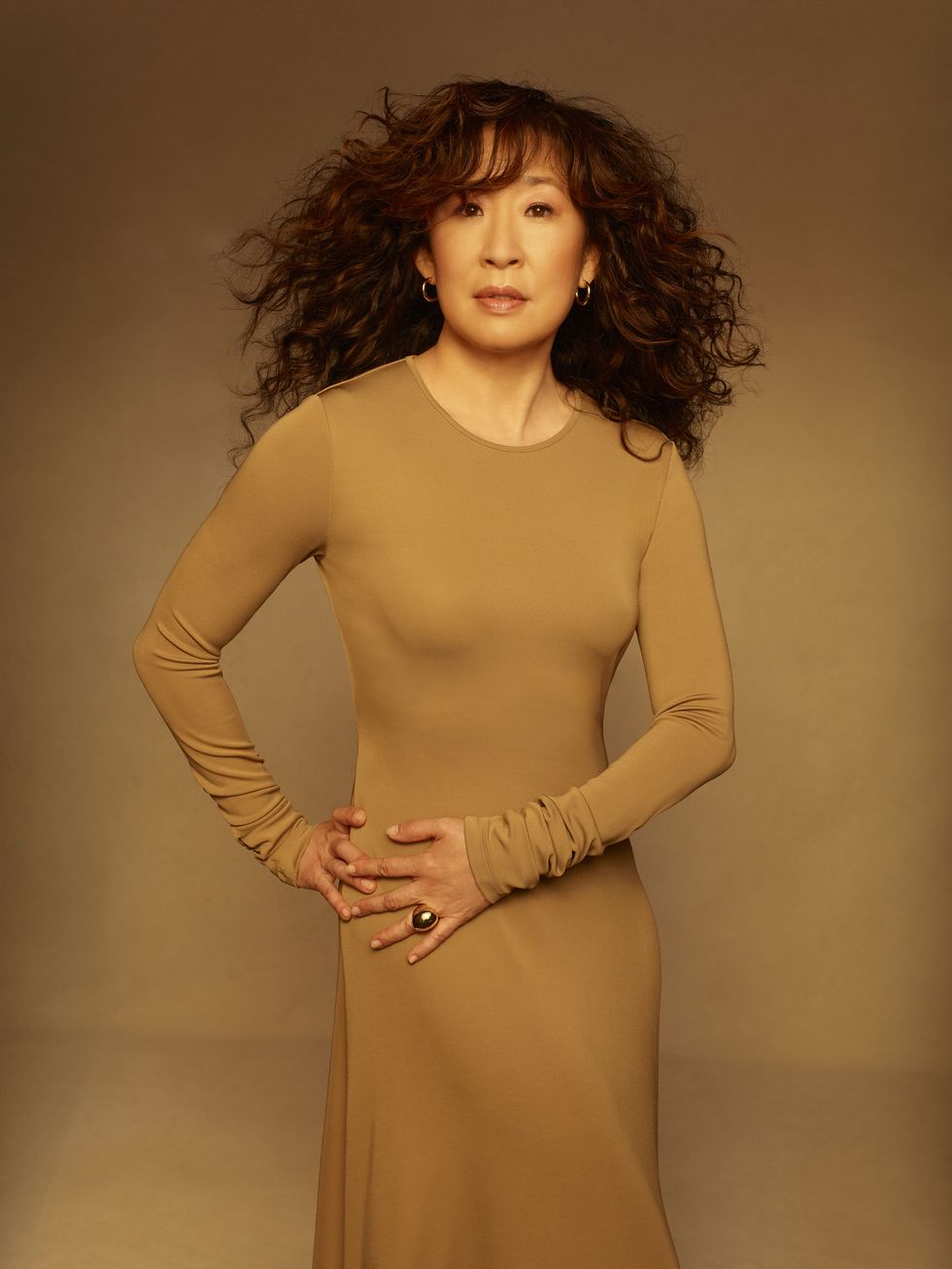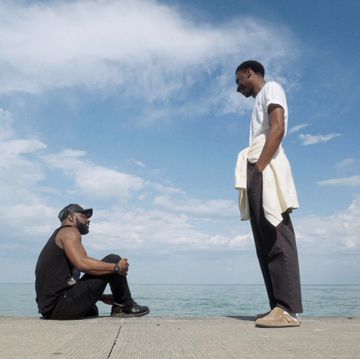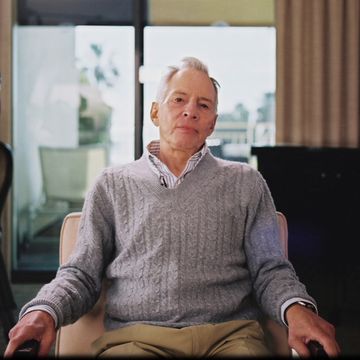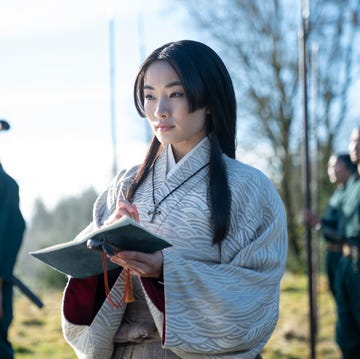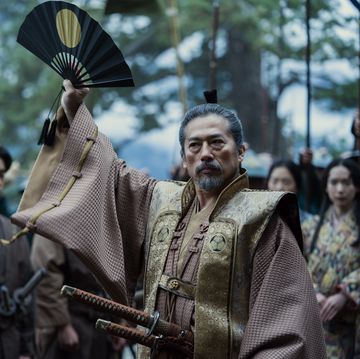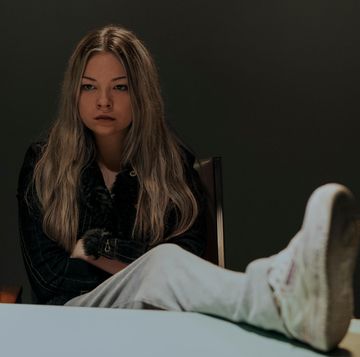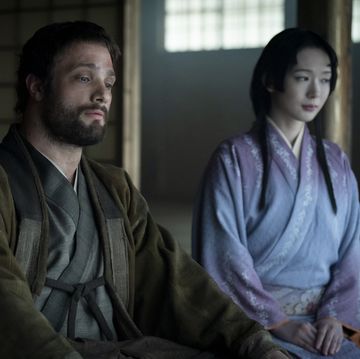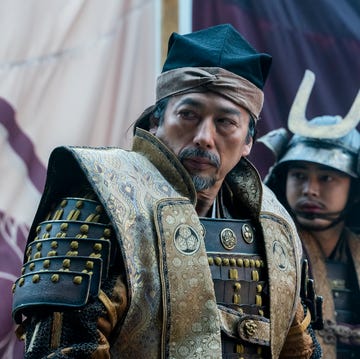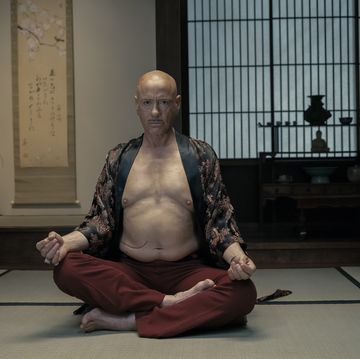“When I opened that page and saw that her name is a Korean name,” Sandra Oh tells me over Zoom, “It really righted something in myself. I recognized it because the character was recognizing me. So the way that I was able to meet the character was much more curious, much more open.”
There’s a story Oh tells about realizing that she was being asked to play the initially mild-mannered MI6 agent Eve Polastri, the lead character in Killing Eve. Even after decades of acting, five Emmy nominations, and a Golden Globe win, she initially couldn’t understand which role she was being offered in the gruesome and sexy BBC psycho-drama. She’d played sidekicks and best friends, teachers and politicians. But not since her early days in the Canadian film and television scene of the 1990s had she played a title character.
“When I started working professionally, I was about 14, 15. Immediately, I could never go for any lead parts. As a young person of color, your world is being shaped deeply unconsciously,” says Oh, who was raised in Ottawa by her Korean immigrant parents. “It takes a lifetime to free yourself from your own diminished sense of possibility.”
But this isn’t the story of Sandra Oh being offered her first series lead role—this is the story of Sandra Oh being offered what would become her second series lead role. By the time the script for Netflix’s campus dramedy The Chair crossed her path, a few years of post Killing-Eve accolades and magazine covers had forever changed the course of her career. But there was another aspect of the script that helped make its starring part feel like her own: the name of the titular English department chair, Dr. Ji-Yoon Kim. In the novels that inspired Killing Eve, Eve is a white Brit, not Asian American, and the show’s initial seasons barely touched on the ethnicity of the agent locked in erotic espionage intrigue with Jodie Comer’s Villanelle. But in The Chair, Ji-Yoon is purposefully, intentionally Korean-American.
The list of Oh’s accolades and history-making achievements is long enough to make for dull reading, but includes the fact that she was the first person of Asian descent to host the Golden Globe Awards, and the first Asian woman to win two of the trophies. She is the most nominated Asian actor in Emmy history, and the only Asian woman ever to be nominated for the award for best lead actress in a drama. Across her celebrated turn in Killing Eve, her decade of playing the brilliant and sharp-elbowed Dr. Cristina Yang on Grey’s Anatomy, and now as crisis-juggling academic Professor Kim on The Chair, Oh delivers expert, intimate performances. Now, she’s leaving her mark on the TV landscape—both in front of the camera and behind the scenes.
The Chair is a snarky but sincere workplace dramedy, one that brings a certain kind of red-bricked liberal arts college to thoroughly realistic life. Helmed by showrunner Amanda Peet and executive produced by Game of Thrones creators D.B. Weiss and David Benioff (Peet's husband), the series counts among its main cast veteran talents Holland Taylor and Bob Balaban, as well as actor and filmmaker Jay Duplass.
Early in the series’ six-episode run, Ji-Yoon realizes that the glass ceiling she shattered to become chair has actually left her tottering on the edge of a glass cliff, struggling to keep the English department afloat amid budget cuts and academic culture wars. Among her colleagues are aging professors played by Taylor and Balaban, who are both attempting to maintain their positions in the face of shifting generational tides, and Duplass, who perfectly embodies a certain kind of Gen X writer, greying and rumpled, happy to embrace the trappings of institutional legitimacy while refusing to relinquish his anti-authority mien. Recently widowed, he’s prone to noisy self-destruction, and as he gets caught up in a campus firestorm, Ji-Yoon, who’s long nurtured a crush on him, tries her best to pull him from the flames.
“We had to make intimacy out of nothing,” says Oh. She's referring to the challenge of filming the show this winter under pandemic-era strictures and before widespread vaccine availability, which forced the cast to forego the in-person rapport building that usually takes place before the cameras roll. But the same might be said of any production, even before the pandemic: from the collaborations of directors, writers, producers, and actors, characters emerge who seem real, and familiar-feeling worlds are created. Intimacy, born of thin air.
“I'm sure many people understand this now, how much communication happens when you are in the same room with someone,” says Oh. “You don't even necessarily need to be speaking with them. And suddenly being isolated or having the need for masks and shields and glasses, trying to communicate with people, [there is] a real barrier.” Luckily, she was working with one of the most accomplished new series casts of the year. The Chair’s five adult leads have accumulated 27 Emmy nominations among them—12 of which belong to Oh herself.
Nothing makes for TV magic like watching actors who are both highly seasoned and impeccably skilled playing off of each other in that crackling flow state of chemistry and charisma, but conversely, it’s also a treat to watch newcomers who offer the freshness and the verisimilitude of unfamiliar faces. (It’s the performances in between, of inexpert actors just experienced enough to be jaded, that can be a little hairy.) The Chair captures both extremes, with scenes devoted to Ji-Yoon’s work life finding Oh paired with her deeply experienced peers, kvetching with Taylor or resisting the cost-cutting overtures of the college’s dean, who’s played by David Morse. She and Duplass spar and flirt endearingly as their characters test the boundaries of their workplace friendship. Sometimes the personal charisma that attracts us to our most decorated actors can be weighty on the screen, but in The Chair, as ever, Oh wears her magnetism lightly.
Ji-Yoon’s domestic life centers around her father and adoptive daughter, played by Ji Yong Lee and seven-year-old Everly Carganilla, whose terrific performance threads the needle between intimidatingly funny precocity and perfect grade-school innocence. Lee is new to acting—“He's a retiree who lives in Atlanta,” says Oh. “I think he sold insurance and he was just like, ‘I want to be an actor’”— and Oh’s scenes with the little kid and elderly newcomer are among the series' richest.
As Duplass’s character is swept into a cascade of campus controversies, Ji-Yoon seesaws between her desire to support him and her goals of modernizing the department and helping its first Black woman faculty member, played by Nana Mensah, earn tenure. The work of modernizing an unwieldy and often unwilling institution is something that Oh has first hand experience in—it’s work she’s currently doing in Hollywood.
Before the mid-2000s, seeing a film or television character with an Asian given name—or a non-Asian writer’s lazy approximation of one—generally signaled that the audience was about to meet a one dimensional character, and perhaps hear an accent that would be presented as the punchline to a malicious, centuries-old joke. Later series attempted to course correct by erasing characters’ ethnic identities altogether. Cristina Yang, Oh’s character on Grey’s Anatomy, was a Korean-American surgeon working alongside a diverse array of colleagues, and while every facet of their personal and sexual lives was thoroughly plumbed for primetime drama, race initially was not.
“I call it the Obama years,” says Oh, referring to the imagined post-racial promise that pervaded the early seasons of Grey's, “because we never talked about race, and I’m pretty sure the show is different now.” (She’s right; recent episodes have found the doctors of Grey Sloan Memorial treating racial justice protestors and a child victim of a police shooting.) Now, movies and TV shows, particularly those with people of color behind the camera—Oh is herself an executive producer on The Chair—are acknowledging characters' specific cultural identities, with the goal of being respectful and authentic.
Oh called into our interview from London, where she’s filming Killing Eve’s fourth and final season. Oh, who serves as an executive producer on that show as well, can’t say much about what its last episodes hold, only that she wants to make sure that the series “serve[es] [its] characters well” in the end, “even Villanelle and Carolyn and Constantin.”
But she highlights one aspect of the show’s third season, which finds Eve alienated from her friends, nursing a gunshot wound, and taking refuge in her newfound work as a cook at a Korean restaurant. It was the first time the show suggested that Eve possessed cultural ties beyond those indicated by her American accent. “For me, it was like she should be around the language, the sounds, the smells, the food,” says Oh. “I just wanted to have something that was visual and grounding.”
On The Chair, Ji-Yoon spends her time at home casually alternating between speaking Korean to her father, who doesn’t speak English, and her daughter, who doesn’t speak Korean. In real life, Oh is far from a fluent Korean speaker. But she was determined to nail just the sort of Korean Ji-Yoon should speak—that American-accented, English-inflected take on her parents’ mother tongue that second generation immigrants with roots all over the globe slip into at home and family gatherings.
“I speak such baby Korean,” says Oh. “I was adamant that I needed to get my Korean up to the correct level that Korean-Americans speak Konglish to their parents.”
In her quest to nail the dialogue, Oh “really leaned on” editor Stacy Moon. “It was so amazing, being able to talk to someone about this, something very specific,” says Oh. “I was like, ‘Listen, I want my Korean not to grate your ears, because when you suddenly hear your parents' language or a language that you know being completely butchered, it throws you out of the show.’”
Oh’s interest in playing characters with fleshed-out cultural identities has repercussions across the projects she selects. The writing staff has to include people who can write them authentically, and the cast and crew must feature collaborators knowledgeable enough to sniff out unconvincing Konglish. Oh’s upcoming projects find her working with Asian-American filmmakers Iris Shim and Domee Shi, in the psychological horror Umma and as one of the voice leads for Pixar’s Turning Red.
The breakthroughs made by Asian actors in Hollywood, reflected in historic achievements of performers like Oh, and Youn Yuh-jung, and filmmaker Bong Joon Ho have in recent months been placed against a grim backdrop—America’s steeply rising rate of violent anti-Asian hate crimes. The attacks, which have disproportionately targeted the elderly, are like “the nightmare that you've always been scared of,” says Oh, “popping up and attacking your elders.” While The Chair was filming in Pennsylvania, a shooter murdered six Asian-American women in Atlanta. Oh attended a Stop Asian Hate protest in Pittsburgh, and led attendees in chanting “I am proud to be Asian!
“It's like a horror show,” says Oh. “I realized that what I was hoping to address in that moment in Pittsburgh was fear. Fear that, I think, in our community we've always had, and never necessarily had an outlet, or an understanding [of] a way through it. We need to lean on other people that might not be in our own sphere, family or culture. It's time for us to open up, and it's time for us to move through fear.”
The protest was an immediate and visceral call to action against violence and bigotry. But when it comes to changing Hollywood, Oh is looking at the “long game.”
“The nature of storytelling and image making goes very, very deep,” says Oh. “When you see white kids dress up either as the Black Panther or as Raya, from Raya and the Last Dragon, that's when you understand that storytelling has an ability to start shifting culture.” This long game offers opportunities for new intimacies—intimacy with stories that might have otherwise been untold and artists who could have gone unknown.
Even our interview was the result of Oh’s agitation for inclusivity, as she requested that this article be written by a person of color. It’s not a request that will singlehandedly reshape the entertainment landscape, but it’s one that nudges along my career, and the careers of all the other writers of color who might now have the opportunity to cover one of TV’s most decorated actors. It also shapes what that coverage might look like.
“What I already know by speaking to a writer of color or a writer who has an immigrant background is that there is going to be a level of understanding,” says Oh. “A different type of conversation can come about. And I, at this point, like living in that conversation.”
